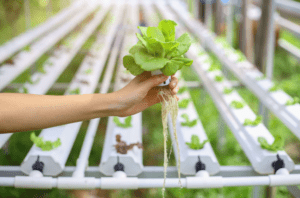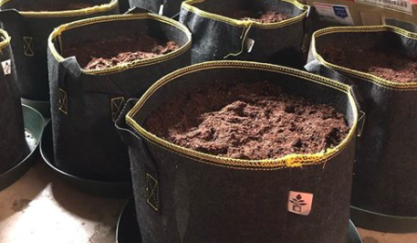Exploring the World of Hydroponics: A Guide to the History and Benefits of Hydroponic Gardening
Introduction to Hydroponic Gardening
Hydroponic gardening is a method of growing plants without the use of soil. Instead, plants are grown in nutrient-rich water solutions, which provide all the necessary elements for plant growth. In this blog, we will delve into the history of hydroponics, the various types of hydroponic systems, and the advantages of this innovative method of gardening.
The History of Hydroponics
The history of hydroponics dates back to ancient civilizations, with the earliest known use of hydroponic gardening taking place in the Hanging Gardens of Babylon around 600 B.C. In the 1930s, Dr. William Frederick Gericke, a botanist at the University of California, Berkeley, began experimenting with hydroponic gardening. He developed a system that used nutrient-rich solutions to grow plants in water instead of soil. Gericke called this method “nutriculture” and is considered the father of hydroponics.
taking place in the Hanging Gardens of Babylon around 600 B.C. In the 1930s, Dr. William Frederick Gericke, a botanist at the University of California, Berkeley, began experimenting with hydroponic gardening. He developed a system that used nutrient-rich solutions to grow plants in water instead of soil. Gericke called this method “nutriculture” and is considered the father of hydroponics.
Types of Hydroponic Systems
There are many different types of hydroponic systems, each with its own set of advantages and disadvantages. Some popular types include:
- Drip systems, which deliver water and nutrients to the plants through a series of tubes and emitters.
- Ebb and flow systems, where the plants are periodically flooded with nutrient-rich water, and then the water is drained away.
- Nutrient film technique (NFT) systems, which rely on a constant flow of nutrient-rich water that runs through channels and past the roots of the plants.
Advantages of Hydroponic Gardening
Hydroponic gardening is becoming increasingly popular in recent years, particularly in urban areas where space is limited. Hydroponic gardens are often used to grow fresh produce, such as tomatoes, cucumbers, and lettuce, as well as flowers. They can also be used to grow herbs, like basil and mint, which are popular in cooking. Hydroponic gardening is considered to be an efficient and sustainable way to grow food and flowers. Because the plants are grown in controlled conditions, the risk of disease and pests is reduced, and the use of pesticides is often unnecessary. Additionally, hydroponic gardening can produce higher yields than traditional gardening methods, using less water and space.
Conclusion: The Future of Hydroponics
In conclusion, hydroponic gardening is an ancient method of growing plants without soil, which has been modernized and revolutionized in the last century. The technique has a wide range of applications in food, flower, and herb production and is considered an efficient and sustainable way of gardening. With the increasing population and the need for more sustainable ways of producing food, the future of hydroponics looks bright.
You Might Also Like
Leave Comments Cancel reply
Archives
- July 2023 1
- June 2023 3
- May 2023 4
- August 2022 3
- May 2022 1
- November 2020 1
- March 2020 1
- January 2020 1
- May 2019 1
- February 2019 2
- January 2019 2
- December 2018 3
- November 2018 2
- October 2018 2
- September 2018 2
- August 2018 1
- July 2018 2
- June 2018 2
- May 2018 2
- April 2018 2
- November 2017 1
- October 2017 2
- July 2017 1
- June 2017 3
- March 2017 1
- February 2017 1
- November 2016 1
- October 2016 2
- August 2016 8









